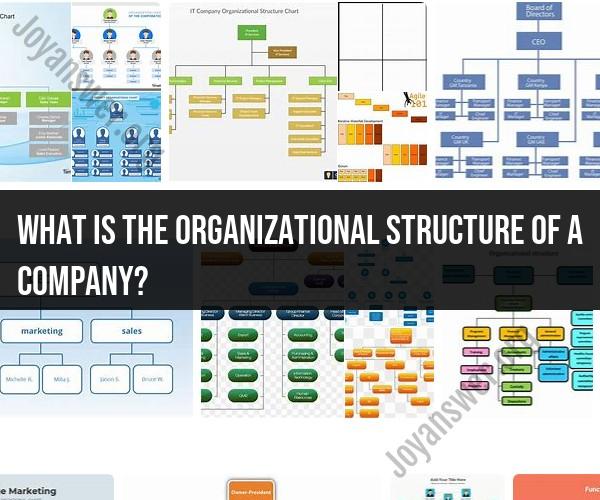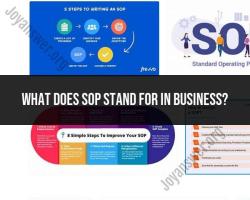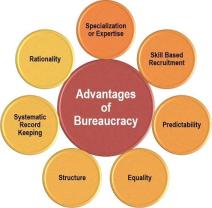What is the organizational structure of a company?
The organizational structure of a company refers to the framework or hierarchy that outlines how the company is organized, how tasks and responsibilities are distributed, and how information flows within the organization. It defines the relationships between various roles and positions within the company. Organizational structure can vary widely from one company to another, and it plays a crucial role in determining how the company operates, makes decisions, and achieves its goals.
Here are some common elements and components of organizational structures:
Hierarchy: Most organizations have a hierarchical structure, which means they have multiple levels of management and employees. The hierarchy typically includes top-level executives, middle managers, and front-line employees.
Departments or Divisions: Companies often organize themselves into different departments or divisions based on functions, such as marketing, finance, human resources, sales, production, and research and development. Each department focuses on specific tasks and responsibilities.
Chain of Command: Within the hierarchy, there is a clear chain of command that defines who reports to whom. This ensures that there is a clear line of authority and accountability within the organization.
Span of Control: This refers to the number of employees or subordinates that a manager or supervisor is responsible for. A narrow span of control means fewer employees report to a single manager, while a wide span of control means more employees report to a manager.
Matrix Structures: Some organizations use a matrix structure where employees may report to multiple managers or work on cross-functional teams. This structure is common in complex, project-based environments.
Flat Structures: In contrast to hierarchical structures, some companies adopt flat structures with fewer levels of management. This can promote a more open and collaborative work environment.
Centralization vs. Decentralization: Companies can be centralized, where decision-making authority is concentrated at the top, or decentralized, where decision-making authority is distributed across various levels or departments.
Organizational Chart: An organizational chart is a visual representation of the company's structure, showing the relationships between positions and roles. It helps employees understand where they fit within the organization.
Functional vs. Divisional vs. Matrix Structures: Companies may adopt different structural models based on their size, industry, and strategic goals. Functional structures group employees by their specialized functions, divisional structures organize employees by product lines or geographic regions, and matrix structures combine elements of both.
Organizational Culture: While not a formal part of the structure, organizational culture plays a significant role in how a company operates. It includes shared values, norms, and behaviors that guide how employees interact and make decisions.
The choice of organizational structure depends on various factors, including the company's size, industry, goals, and culture. It's essential for a company to have a clear and effective organizational structure to ensure efficient operations, effective communication, and the achievement of its objectives.
Unveiling Company Structure: What You Need to Know
Company structure refers to the way in which a company is organized, including its hierarchy, reporting lines, and communication channels. It is important for any company to have a well-defined structure in place in order to operate efficiently and effectively.
There are many different types of company structures, but some of the most common include:
- Functional structure: This is the most traditional type of company structure, and it is organized around different departments or functions, such as marketing, sales, and finance.
- Divisional structure: This type of structure is often used by larger companies, and it is organized around different products, markets, or geographic regions.
- Matrix structure: This type of structure is a hybrid of the functional and divisional structures, and it is often used by companies that need to be both flexible and efficient.
The best type of company structure for a particular company will depend on a number of factors, such as its size, industry, and goals.
Here are some of the key benefits of having a well-defined company structure:
- Improved communication and collaboration: A clear structure can help to improve communication and collaboration between employees, as everyone knows who they report to and who they need to work with.
- Increased efficiency and productivity: A well-organized structure can help to streamline processes and reduce duplication of effort, which can lead to increased efficiency and productivity.
- Improved decision-making: A clear structure can help to improve decision-making by ensuring that decisions are made at the appropriate level and that all relevant stakeholders are involved.
- Enhanced employee morale: A well-defined structure can help to boost employee morale by giving employees a clear sense of their role and responsibilities within the company.
Corporate Framework: Understanding the Organizational Structure
The corporate framework of a company is the foundation upon which the company's organizational structure is built. It includes the company's mission, vision, values, and goals. The corporate framework also defines the company's legal structure, ownership structure, and governance structure.
The organizational structure of a company is the way in which the company is organized to achieve its goals. It includes the company's hierarchy, reporting lines, and communication channels. The organizational structure also defines the roles and responsibilities of employees at all levels of the company.
The corporate framework and organizational structure of a company are closely intertwined. The corporate framework provides the foundation for the organizational structure, and the organizational structure is designed to help the company achieve its goals.
The Anatomy of an Organization: Insights into Company Structure
The anatomy of an organization refers to the different components that make up the company and the way in which they are interconnected. The key components of an organization include:
- People: The people who work for an organization are its most important asset. They are responsible for carrying out the work of the organization and achieving its goals.
- Structure: The structure of an organization defines the way in which the organization is organized, including its hierarchy, reporting lines, and communication channels.
- Processes: The processes of an organization are the steps that are taken to carry out the work of the organization.
- Systems: The systems of an organization are the tools and technologies that are used to support the organization's processes.
The anatomy of an organization is important because it can help to identify areas where the organization can improve its efficiency and effectiveness. For example, if the organization's structure is not well-defined, it can lead to confusion and inefficiency. Or, if the organization's processes are not well-designed, it can lead to waste and duplication of effort.
By understanding the anatomy of an organization, companies can make informed decisions about how to improve their structure, processes, and systems. This can lead to a number of benefits, such as increased efficiency, productivity, and profitability.













